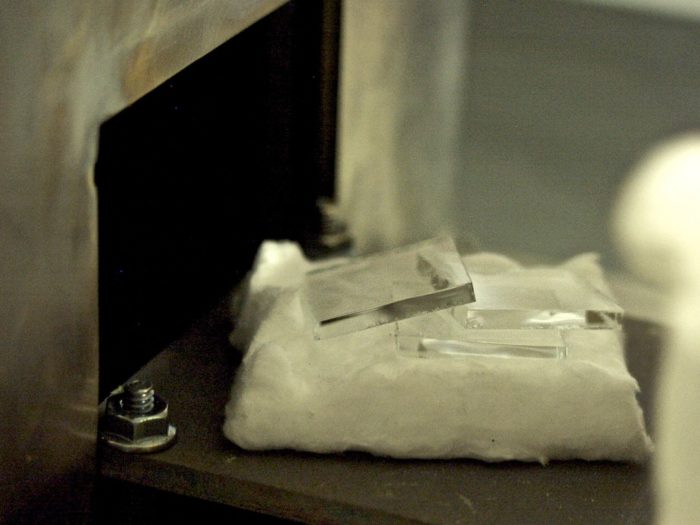
Image Credit: Oregon BEST
Public and private researchers in Oregon have been awarded a $150,000 grant to continue work on a new coating process for architectural glass that would reflect infrared radiation without blocking as much visible light as current coatings.
Researchers say the combination of an anti-reflective coating that boosts light transmittance with a new type of low-e coating would produce solar heat gain coefficients in line with coatings that are currently available but with much better visible light transmittance. In the process, the coating would have the potential to save millions of dollars by lowering the demand for electric lighting.
The anti-reflective coating is in “advanced development,” says Paul Ahrens, CEO of CSD Nano in Corvallis, Oregon.
“It’s relatively straightforward to make a film that blocks the [infrared radiation] and has a good solar heat gain coefficient,” Ahrens says. “The problem is that it also ends up blocking visible light, so you’ve sort of defeated the purpose of the window. You might as well have a wall.”
In cold climates, low-e coatings help block the escape of radiant energy from the inside through window glass. In sunny climates, coatings can be used to lower a window’s solar heat gain coefficient, helping to keep radiant energy from getting into the house.
Could this new low-e coating solve the “melted vinyl siding” problem?
Many current low-e coatings are applied to glass in a chemical deposition process, Ahrens says, and typically contain layers of silver alternating with other materials. But reflected heat from the sun can scorch lawns and soften vinyl siding, and silver is an expensive, limited resource. Aherns says the low-e coating currently in development would use “transparent conducting oxides” of tin instead, which would absorb infrared radiation rather than reflect it like current coatings.
CSD Nano also is hoping to develop a low-temperature process for applying a low-e coating to Plexiglas, which is not possible with current application methods.
Oregon BEST, which announced the grant award, says the coating is being developed by researchers at Oregon State University’s Oregon Process Innovation Center for Sustainable Solar Cell Manufacturing, and that once developed, CSD Nano would apply it to glass samples that could be analyzed.
Ahrens says the project could have a coating ready for the market in about a year. “It needs a lot of work,” he says. “The grant is to turn this very preliminary data into reality.”
Weekly Newsletter
Get building science and energy efficiency advice, plus special offers, in your inbox.














0 Comments
Log in or create an account to post a comment.
Sign up Log in